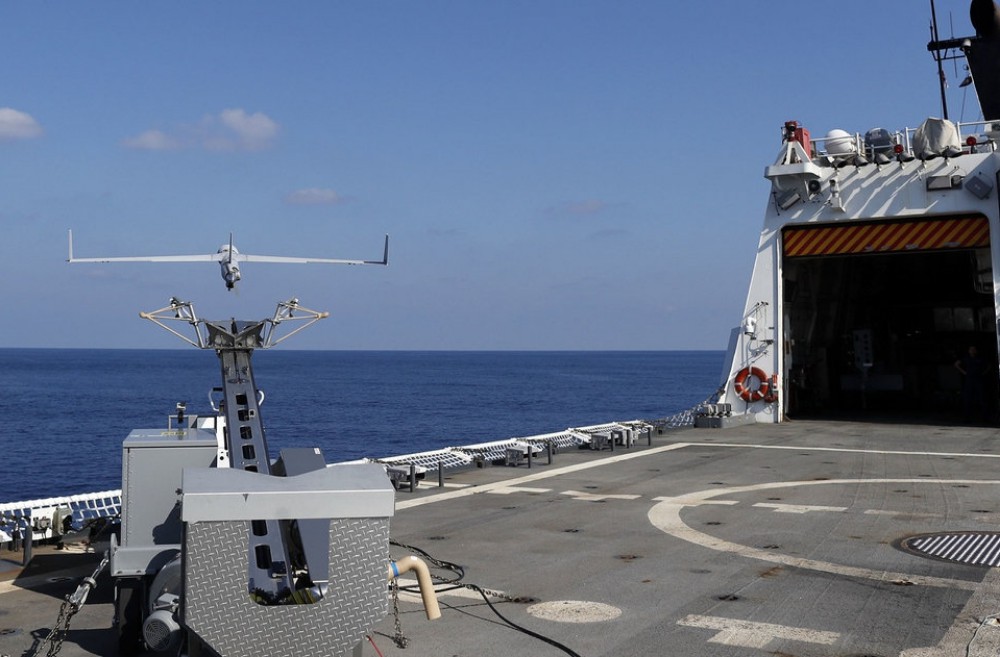The Coast Guard intends to release a request for proposals within the next three to six weeks for small UAS services, with the award worth no more than $300 million, said Lt. Emma Lutton, a spokeswoman of the service. A contract award is expected sometime during the third quarter of fiscal year 2018.
Although requirements are not yet finalized, the service wants economically-priced air vehicles that can remain airborne for at least twelve hours a day, Lutton told Defense News.
The drone should also have the size, weight and power to operate an electro-optical/infrared sensor, aeronautical transponder, VHF/UHF communications relay and a non-visible infrared marker. The service also wants a UAS system capable of swapping out those payloads with others, including government-provided systems, in under a couple hours, she said.
The Coast Guard has already reaped the benefits of small drones through a couple of recent demonstrations, which have helped it refine its requirements and concept of operations.
Last year the service, operating a Boeing-Insitu ScanEagle aboard the Legend-class cutter Stratton, netted 25 tons of cocaine with a street value of $2.1 billion, said Ron Tremain, the company’s business development executive for civil and maritime industries and a former Coast Guard rescue swimmer.
“We had an actual team that was actively deployed onboard the Coast Guard cutter, and they essentially become part of the ship’s crew,” he said during a Jan. 11 interview at the Surface Navy Association symposium.
The U.S. Navy has operated the ScanEagle aboard its vessels, but Tremain said severe weather conditions and the movement of the Coast Guard cutters proved to be a challenge for the contractors operating the drone. Insitu deployed twice with the Stratton last year, and better weatherized the ScanEagle before the second patrol.
“We were flying in weather conditions that were tropical, torrential squalls, much higher than the contract called for and much higher than the Coast Guard was even expecting, and we’re very proud to say that the plane performed very well,” he said.
Unsurprisingly, Insitu plans to offer ScanEagle for the upcoming competition. However, it will likely face stiff competition from Textron Systems, which will likely put forward a shipboard version of its Aerosonde UAS, a small catapult-launched drone that has been in use by U.S. Special Operations Command and other users.
“We are very interested in reviewing its upcoming Small Unmanned Aircraft Systems (SUAS) RFP and evaluating next steps,” said David Phillips, the company’s vice president of small/medium-endurance unmanned aircraft systems for Textron. “Our Aerosonde SUAS has been executing to an extremely high operational tempo for multiple customers every month in austere environments around the world.”
Photo: In this Saturday, Feb. 25, 2017 photo, the ScanEagle unmanned aerial vehicle takes off from the flight deck of the U.S. Coast Guard cutter Stratton somewhere in the eastern Pacific Ocean -AP Photo/Dario Lopez-Mills
Source: Defense News

